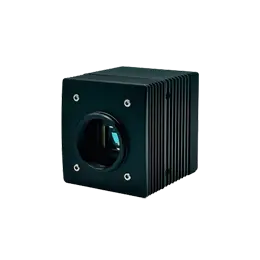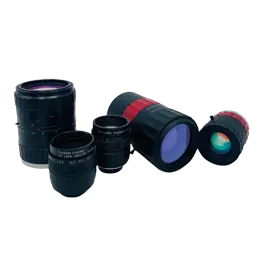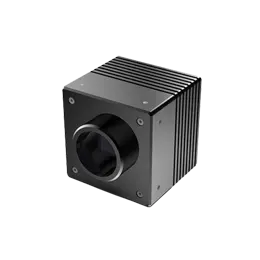According to the arrangement of pixels, industrial vision cameras can be divided into line scan cameras and area scan cameras. Both line scan cameras and area scan cameras have their advantages and disadvantages, and they are suitable for different application environments.
As the name implies, the line scan camera is measured with a "line" of the field of vision. Its sensor usually has a single line of photosensitive elements, which continuously takes pictures in a "line" scan mode, and then synthesizes a huge two-dimensional image. Line scan cameras have specific advantages compared to area scan cameras in some applications, such as high-frequency scanning and high-resolution applications. For example, multiple area scan cameras may be required to cover the entire surface of the object when examining circular or cylindrical objects. However, if the object is placed in front of a line scan camera and then rotates the object by expanding the image, an image of the entire surface can be collected. In addition, the line scan camera is also easier to install in small application space, such as where the camera must use the roller on the conveyor belt to view the bottom of an object. Moreover, line scan cameras are usually able to provide higher resolution than traditional area scan cameras. Since line scan cameras require objects to move to create images, they are usually ideal for examining products that are in continuous motion.
Compared with the line scan camera, the area scan camera in industrial vision camera uses the "area" as the unit for image acquisition and its sensor has more photosensitive pixels arranged in a matrix. The area scan camera can obtain a complete target image at one time and has a faster detection speed than the line scan camera. Most common inspection cameras are based on area scans, including measuring area, shape, size, position, and even temperature. However, the area scan camera does not have as much information on each line as the line scan camera, and the frame rate is limited. Camera pixels are usually expressed in units of ten thousand and arranged in a matrix. For example, the pixel matrix of a 1 megapixel camera is W x H (width x height) = 1000 x 1000. The resolution of the camera refers to one pixel representing the size of an actual object, which is expressed by um x um. The smaller the value, the higher the resolution. The resolution is determined by the focal length of the selected lens. For the same camera, the resolution is different if the lens of the different focal length is selected. The performance of the image details is not determined by the number of pixels of the camera, but by the resolution. Under the same resolution condition, the more pixels, the larger area can be imaged. Although the resolution is not determined by the pixels, a camera with a large pixel can reduce the number of pictures taken so as to increase the speed.



